Also in this category
View more in Connectivity for Remote NetworksConnectivity for Remote Networks
Directional antennas vs. omnidirectional antennas for rural connectivity
Updated on September 16, 2025
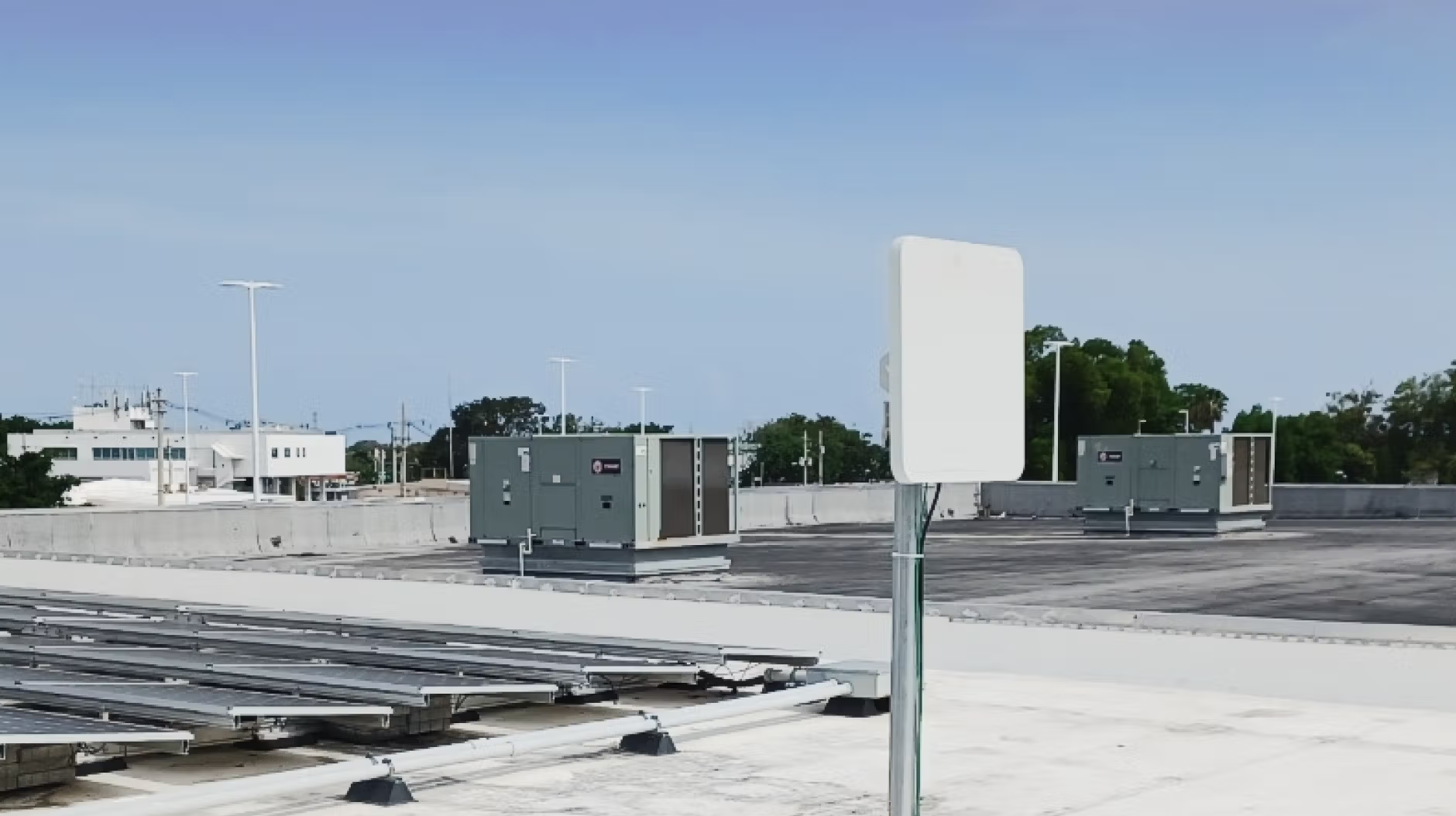
Optimizing your network connection is critical to ensuring your business is getting all the connectivity it’s paying for. This isn’t always easy, especially in rural areas where cell towers are few and far between and often far away.
Limited provider infrastructure in rural and remote areas often means both less choice in where to try to pull a signal from, but also that your access points are likely to be far away.
Cellular antennas are essential components for any business trying to deploy an effective wireless network, urban or rural. In general, there are two type of antenna: omni antenna and directional antennas. While the omni antenna is the technology most people are familiar with and is often considered the default option, directional antennas may be a better choice or even a necessary one for certain deployments in rural and remote areas.
It’s crucial to understand the different types of cellular antennas and the use cases they serve to choose the right option to suit your business needs.
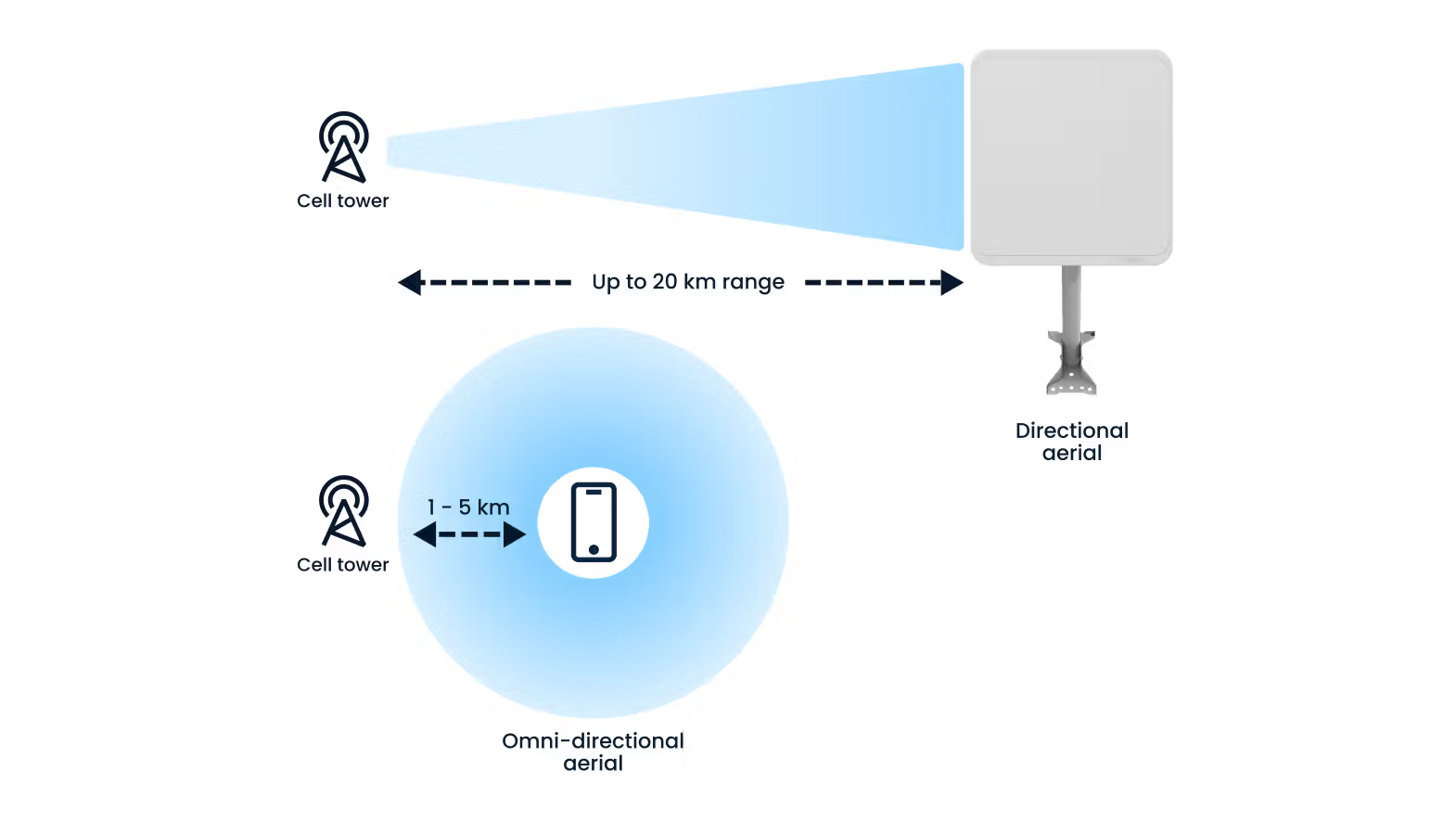
Directional antennas provide superior range and signal gain
Omnidirectional and directional antennas share many capabilities. The main area in which they differ is where they can acquire cellular signal from.
An omni antenna broadcasts and receives signals in all directions simultaneously. Because these antennas distribute Radio Frequency (RF) energy in a broad pattern, they support deployments that require multipath propagation for comprehensive connectivity. This makes them very useful in contexts where signals may be coming from multiple directions, often because the signal is deflecting off obstacles, or because there are multiple cellular base stations nearby. Typically, this means an omni antenna is a good choice for urban environments, where base station density is higher and signal direction is difficult to predict accurately.
However, their low gain signal makes them less effective over long distances. In rural areas with limited or spread-out cell towers, their efficiency diminishes due to increased interference and signal noise. And they can struggle to maintain high-quality connectivity in environments where they don’t have line of sight to a cellular base station.
Directional antennas are engineered to provide a higher gain over long distances. These antennas focus radio frequencies into a narrow beam, amplification and optimizing signal reception in a single, particular direction. To acquire a signal, they must be precisely aligned with a cell tower or access point but are capable of acquiring a higher gain signal even over very long distances. This means that they can provide high-quality connectivity even over great distances, as long as they’re properly calibrated and installed.
Optimize investment with long-range, durable, straightforward antennas
Of course, not all directional antennas are made the same. While any will provide the basic capabilities required to overcome rural connectivity challenges, there are other important considerations to ensure the antenna you choose will work for your business.
The first and foremost consideration in many cases is range. While directional antennas provide greater range than omnidirectional antennas, not every directional antenna has equivalent range. Choosing one that provides the necessary range to reach your nearest cell tower or access point is crucial.
Also worth considering is the robustness of the antenna. Outdoor antennas, particularly in rural and remote areas, often have to cope with harsh environmental conditions. This can include anything from strong winds, rain, snow, to extremes of hot or cold. Constantly replacing your cellular antennas will not only add significant costs but create long, repetitive periods of downtime which can be very costly in their own right. As such, it’s very important to consider the environmental conditions your antennas might face and what the antennas you’re considering are rated for.
And, as a general rule, the easier the antenna is to install, the less costly installation will be. That may be because a technician is needed for less time or because you can bypass the technician entirely and install the antenna yourself. It’s also because the simpler antenna installation is, the more likely it is that the antenna will be installed and aligned correctly with your signal source.
Inseego’s FW3000 is an industry-leading outdoor directional antenna
Inseego is an industry-leader in 5G connectivity. Our FW3000 outdoor directional cellular antenna and FW2000 outdoor directional cellular antenna are ideal solutions for rural areas and remote connectivity.
The FW3000 and FW2000 are equipped with high-gain antennas offering up to 11-14 dBi gain and a reliable range of 10km-20km, ensuring high-quality 5G or 4G/LTE connectivity even at significant distances from an access point. The device also leverages beamforming, a traffic-signaling system that helps direct cellular signals to devices connected to your network, improving both overall performance and range. This focused approach on a single, particular direction is a key aspect of its antenna design.
No matter where you need to deploy a directional cellular antenna, the FW3000 and FW2000 are ready. The device is IP67-rated, ensuring it is waterproof, dustproof, and protected against small objects as well, ensuring neither strong wind, rain, nor snow affects your network performance. And with an operating temperature range from -22°F to 158°F, it can be counted on to perform as-needed, whether it’s in the desert or the tundra.
The FW3000 and the FW2000 can also be used with a router to create a strong Wi-Fi network within a home or business. The directional antenna receives the cellular signal and feeds it to the router, which then broadcasts a strong Wi-Fi signal indoors, effectively providing a complete wireless solution.
And deploying your device is a fast and easy process with the Inseego Mobile app. This app provides real-time insight into network coverage and signal strength information based on location, greatly simplifying the deployment process and ensuring your antenna can be installed in the optimal location. Access it directly from your smartphone for a cost-effective and efficient way to optimize antenna deployment.
Reach out to learn more about our outdoor cellular antenna solutions!
Talk to our experts!
Set your customers or business up with the fastest, most secure, easiest, most reliable fixed wireless solutions.
Is your current internet connection meeting your business needs?
Even though your current connection is meeting your needs 5G cellular is also an affordable way to provide a back-up internet connection if your primary connection goes down.
Inseego outdoor antennas can support dual SIM cards for multi-carrier failover and ultimate reliability.
How is your connection letting you down?
What is your current connection type?
Do you get cell signal at your business?
Who is your current network provider
We've got a solution
A 5G cellular connection is a great way provide extra resilience to you business. This means if your primary connection goes down, any part of your business that relies on connectivity can carry on uninterrupted.
Even if you get a weak or almost no signal from your mobile phone, you can still get a great connection thanks to the powerful, directional antenna inside the FW2000.
5G cellular plans are affordable, with internet options from $50 - $100 per month, from the leading network providers.
What are your details?
How can we contact you?
Thanks, we've got your request
We’re excited to share our 5G connectivity solutions with you.
Check your email now for a confirmation message. Then a member of our team will send a personalised message within 1 business day to arrange a suitable time to have an in-depth one on one consultation.

5G Outdoor FW2000
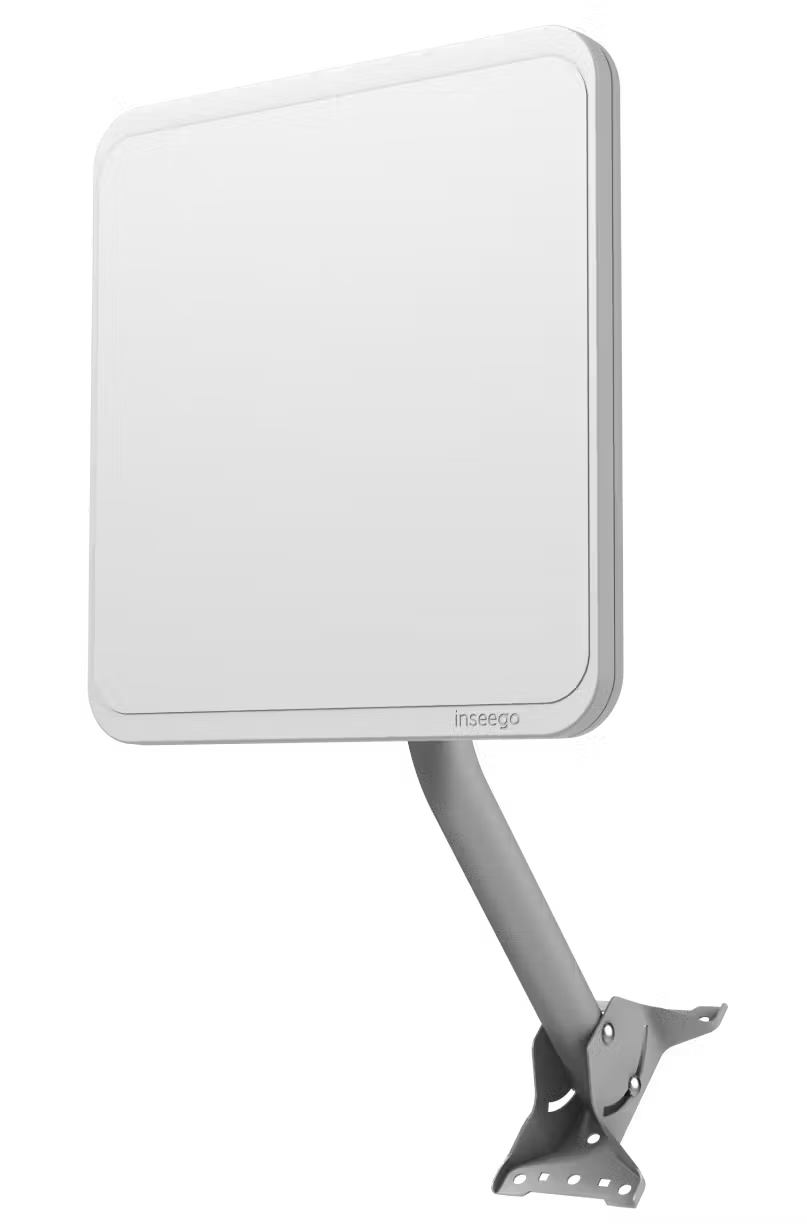


Did you know?
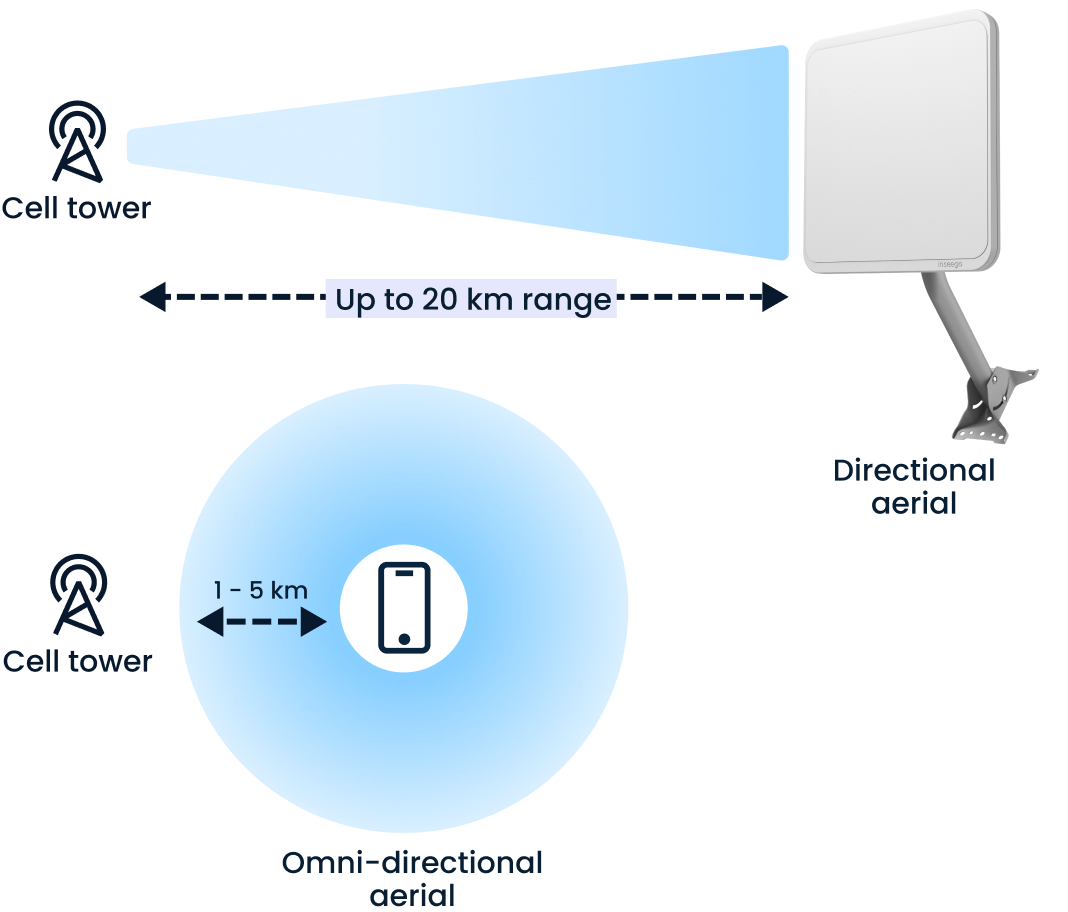

5G Outdoor FW2000

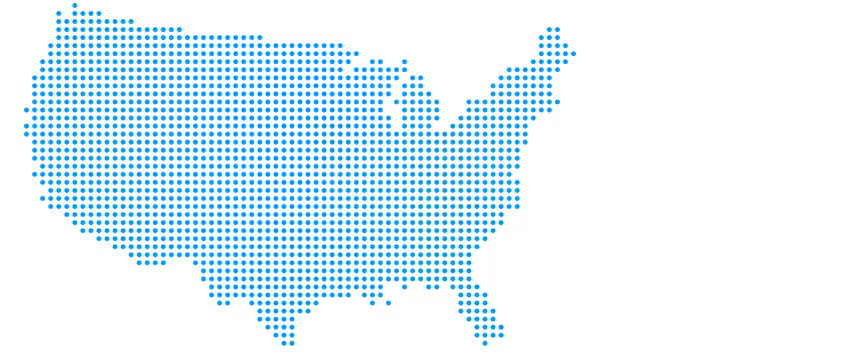
Did you know?
Our hugely experienced team are located across the USA.
We’ll connect you with the Inseego team member nearest to you.
What happens next?
We aim to contact you via email within 1 business day to arrange a suitable to time for a detailed discussion of your needs.

